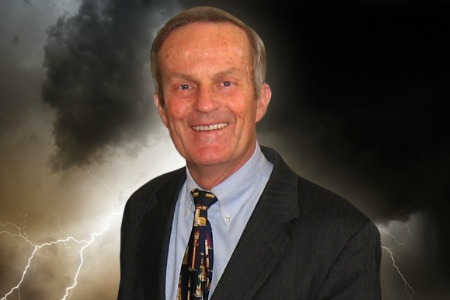
Photo by Lizard / Shutterstock.
Humanity has rocketed past the 7 billion mark, and if things continue as they’ve been going, there will be 9 billion of us by mid-century. That’s a lot of mouths to feed, but if you believe Stanford University biology professor Peter Vitousek, it can be done — thanks in no small part to our mastery of that most taken-for-granted element, nitrogen.
While carbon has been getting all the media attention lately (see global warming, ocean acidification, and so on), Vitousek says that, for better or for worse, the human perturbation to the global carbon cycle pales in comparison to that of nitrogen.
Nitrogen is crucial for all life. It’s also all around us all the time – three-quarters of the air we breathe is nitrogen gas — yet that vast reservoir is completely unavailable to creatures like humans. The power to “fix” nitrogen into a usable form rests with just a few types of microorganisms, and all other species in the world are propped up on their tiny shoulders.
That crucial task — turning atmospheric nitrogen into a palatable new form — has always set an upper limit on how much life Earth could support. Humanity, too, was held in check by the microbes until the early 20th century, when people first harnessed the power of fossil-fuel energy to attain the magic of nitrogen fixation. And with the Green Revolution after WWII, we implemented it on a massive industrial scale, boosting agricultural production to levels that were previously unimaginable.
As agricultural production has skyrocketed, so has our population, from 1.6 billion in 1900 to 7 billion today and perhaps 9 billion by mid-century. But adding so much new nitrogen to the environment causes problems ranging from ocean dead zones to urban smog. Indeed, one could argue that all of our global environmental impacts, from climate change to mass extinction, are being driven by altering the nitrogen cycle, because it continues to fuel our unprecedented population growth.
Join me as I geek out with professor Vitousek about nitrogen, the challenge of feeding 9 billion humans, and the toll that this could exact on what he calls “Earth’s life support systems.” Vitousek also ponders life on a Pacific island, and the lessons it might offer for the residents of “Island Earth.”
Free MP3. (Right click, select “Save Link As.”)
This interview is part of the Generation Anthropocene project, in which Stanford students partake in an inter-generational dialogue with scholars about living in an age when humans have become a major force shaping our world.



